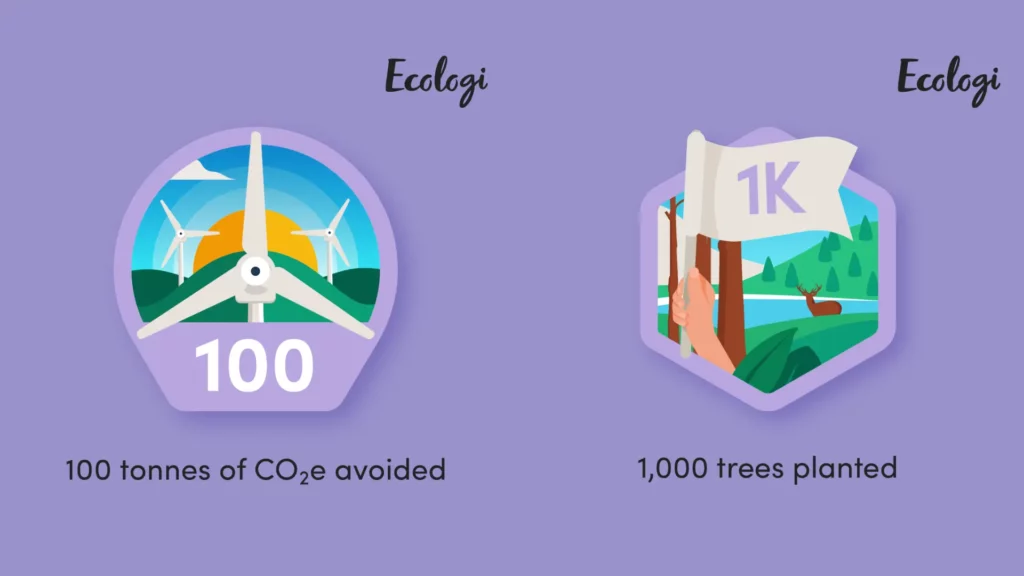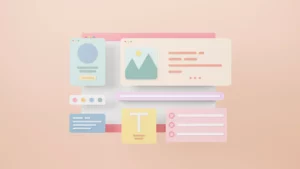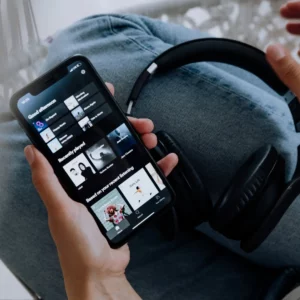
Making Digital Greener Together: Webinar Wrap-Up
Read the wrap-up for our webinar 'Making Digital Greener Together' with Hiyield’s Matt Ville and Scott Stonham from Digital Carbon Online.
As part of this year’s B Corp Month, we were delighted to host the ‘Making Digital Greener Together’ webinar with Hiyield’s Matt Ville and Scott Stonham from Digital Carbon Online.
Check out a recap of the event below, or watch it back on YouTube.
How is technology contributing to our climate problem?
Scott started working at the forefront of technology and realised there’s a constant drive for technology for the sake of technology. It is this continuous drive for technology that has gotten us to where we are now with our climate problem. While working more in sustainability, he realised a lot of good was happening in tech, making him optimistic about technology playing a vital role in creating a better future.
Some positive initiatives that are happening at the moment
There are so many technologies working to improve the future. There are smaller things that will make a small impact at a big scale, but there are also more significant high-investment initiatives with a bigger impact.
One initiative Scott shared is MethaneSAT, satellites in space identifying methane leaks and making countries accountable. This is a greenhouse gas, and if we want to hit our targets, we must eliminate it quickly.
Another one is wildfire detection and prevention; in recent years, wildfires have significantly impacted the world. Wildfires release carbon into the atmosphere and take away trees that take carbon out of the atmosphere.
Ways to get involved
At Hiyield, our goal to be more sustainable was driven by the team, and one of the ways we did this was by working towards our B Corp accreditation, which we got at the end of last year. This made us look more into improving the products we deliver to our clients.
One way to start making changes is by doing good while going about business; there are many platforms to make this happen.
Buy one, give one B1G1, for example, whenever someone books a meeting with you, sponsor a family in another part of the world to receive water.
Patch is sponsoring carbon removal projects around the world.
Ecologi, we sponsor the planting of trees and CO2e emissions being avoided using Ecologi.
As you start making small changes in your business or day-to-day life, you will create a network of people making small changes that collectively build up.

Changes you can make today
Things that we often think are small changes add up to be quite significant, so here are some changes you can make today. A quick tip to remember when editing your website is that every time you build something new, you should take something old away.
By making some of these changes, we are lowering the amount of data being used. When you make a request on a website, the request is sent to a network that connects you with a data centre miles away. The data centre will build the request for the page and send it back down the wire to your computer. It’s the amount of information being sent to your computer that has an impact on creating carbon emissions.
Media Type: This is a big one, looking at the type of media being embedded on the pages of your website, having the wrong kind of image type on your page for the purpose of the image where you can use a different format but have the same effect.
Videos: Embedding high-quality videos into your pages requires a large amount of data to load; you may even be sending this to phones that aren’t even able to load them.
Font Files: Ensure the font files you have loaded by your users are being used on your website. This is where ‘when you add something new, get rid of something old’ comes into practice; when adding a new font to your website, make sure to get rid of the old font file so that it no longer is being loaded.
Google Analytics: If you know you aren’t going to understand Google Analytics, instead of loading this, look at using a different one that will use less carbon to load and is easier for you to understand.
Google Tag Manager: This is on most websites and uses a lot of data, but it isn’t always updated, so if you have this on your website, make sure it is up to date so that you’re not loading something outdated.
Page Speed and Optimisation: You can reduce carbon and improve your search engine optimisation (SEO) by improving your page speed; it improves SEO as part of Google’s algorithm is page loading time, so improving your page speed will allow you to rank higher in search engines while reducing the amount of carbon you are producing.
User Experience (UX): When a user views your website, you want to make sure they can easily find what they are looking for and don’t have to click on lots of different pages to find their answer, so creating a smoother journey will not only improve your UX but also reduce your carbon emissions.
Measuring: Measuring your website’s carbon footprint gives a baseline for when you are making changes. If you take something out or add something, you can see the impact this has on your website. Using Digital Carbon Online is helpful as it tracks all of your pages, allowing you to spend more time working on the page with a small carbon footprint but is your most visited rather than the page with a large carbon footprint but only a few visitors a month.
Q&A
How do I know if my website is bad for the environment?
Every website has some carbon emissions, but we can look at minimising it’s impact. Even if your website is hosted on a green energy web host, it will still have an impact; if you would like to reduce your impact in this area, take a look at the green web directory for different options available to you.
How much can you reduce the emissions of my website?
This depends on the website, so there isn’t a definite answer. You could strip everything back and have a minimal website, but you can never get it down to 0 due to always having to request information from a data centre. You want to reduce your carbon emissions as much as possible while keeping a good UX valuable to your customers.
Scott reduced the carbon emissions on his website by 5kg in 6 months. In February 2023, he noticed that one website produced over 6kg of carbon in a month. To reduce this, he took out plugins he wasn’t using anymore, and he didn’t have image optimisation loaded, meaning .png and .jpeg images weren’t being turned into .webp images. Doing this, by August 2023, his website produced just over 1kg of carbon, reducing his carbon emissions by 5kg.
Typically, what does good look like in terms of a reduction in carbon (as a percentage)? What should you also consider to offset your carbon and minimise the impact?
The percentage decrease depends on the number at the beginning. You can reduce your carbon emissions by optimising images and removing unused plugins, as we mentioned before, as well as improving user journeys and page flows to reduce your carbon emissions even further. If a website has yet to be looked at for reducing the carbon footprint or optimising SEO, you’ll probably see a 70-80% decrease in carbon emissions.
Offsetting isn’t the answer, and we should try reducing our carbon emissions before offsetting them. However, as mentioned, you will never be able to get your website carbon emissions to 0 due to having to request information from a data centre. So, if you want to remove this carbon, look at projects designed to hit removal targets in a short amount of time over planting trees, as planting a tree can take 20-40 years to achieve the carbon removal you want.
How often should you be auditing your websites?
As frequently as you sustainably can, most businesses should be looking to do this monthly, but however often you decide to do this, make sure it becomes a habit. Tracking is the primary metric for change as it gives you a baseline. Digital Carbon Online is a good tool as it always runs in the background and can give you real-time reports. When you do your audit, make some changes, check plugins, and check that no images have been added that aren’t optimised. When you are improving your SEO, you will also reduce your carbon emissions.
What about things like CDN providers like Cloudflare? How would you uncover the impact of services like this for an impact?
Measuring tools can help you find this out on your website. Having a service like Cloudflare will have a good impact as it works to reduce the amount of steps traffic needs to take across a network. Typically, it will work based on geographic location and serve data from a server closer to you; this will also benefit page speed. Having a CDN is a good thing as it will help your UX and website performance and reduce your carbon emissions.
Can you provide an insight into the first steps of how Hiyield measures and reduces a website’s carbon footprint?
We start by measuring, as we need the base metric to see what we have at the beginning. Then, we inspect the requests and what’s coming over the internet from a request. Using the inspect tool, we can see where there are bigger requests, for example, an image that’s too large and then using this, we prioritise where to take steps to reduce carbon emissions. At each project stage, we measure the website to ensure we are hitting our targets.
We hope this webinar summary has been helpful and you can start reducing your digital carbon footprint. If you’d like to learn more about your website’s carbon emissions, you can start by signing up for our free website carbon audit.

Let’s get started!
Great digital products aren’t just built, they’re co-created. Together, let’s breathe life into your idea, crafting solutions that stand out.
Contact

